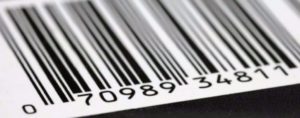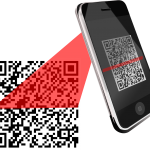 |
Plastic cards can be provided with identification data. A name, number or passport photo are some visual possibilities for identificating people.
A card can also be digitally read by means of a Barcode or QR code that can be read with cash scanners. |
Barcode or QR-code |
|
 |
Barcodes or QR-codes are best printed on a PVC card with a white background. The bar code is preferably printed in black.
Different barcodes are used today such as: EAN13, EAN8, Code39, code128, 2/5 interleaved, and many others. For its own internal coding is the ideal code Code128. This is alphanumeric and can both be large as lowercase. He can also be very small print. |
Thermal printing |
|
 |
Thermal printing is a digital printing process which produces a printed tekst (or image) by selectively heating coated thermochromic paper when the paper passes over the thermal print head.
So you can burn different variable data from a file on the card like a number and/or a name. |
Magnetic strip |
|
 |
These values express the number of metal particles in the magnetic strip. A Hico card is therefore stronger encrypted than a Lowco card. Depending on the use there can be chosen between Hico or Lowco but note that the reader can read your chosen strip. A Hico magnetic strip on a card is recommended for intensive use such as access registration where a card is used many times in a day. A Lowco magnetic strip is often used for less intensive activities (one time per week) such as a tank card. |
Embossing |
|
 |
Embossing is a method where characters are “stamped” into the back side of the card, thus they are visible on the front side as heightened characters. Due to its international character, certain restrictions apply to embossing: only capital letters, the fonts Gothic and OCR and a font size of 5 mm can be embossed. It is not possible, however, to emboss special characters and umlauts. |
Contactless communication cards (RFID) |
|
 |
RFID is a technology that allows you to read/write data from a card without contact between the chip in the card and the terminal. Contactless cards do not have to be inserted into a card acceptor device. Instead, they need only be passed within range of a radio frequency acceptor to read and store information in the chip. The door will open by holding the card in front of the reader. Contactless smart cards are used in many of the same applications as contact smart cards, especially where the added convenience and speed of not having to insert the card into a reader is desirable. There is a growing acceptance of this type of card for both physical and logical access control applications. Student identification, electronic passport, vending, parking and tolls are common applications for contactless cards. |
| > Ask for price |
